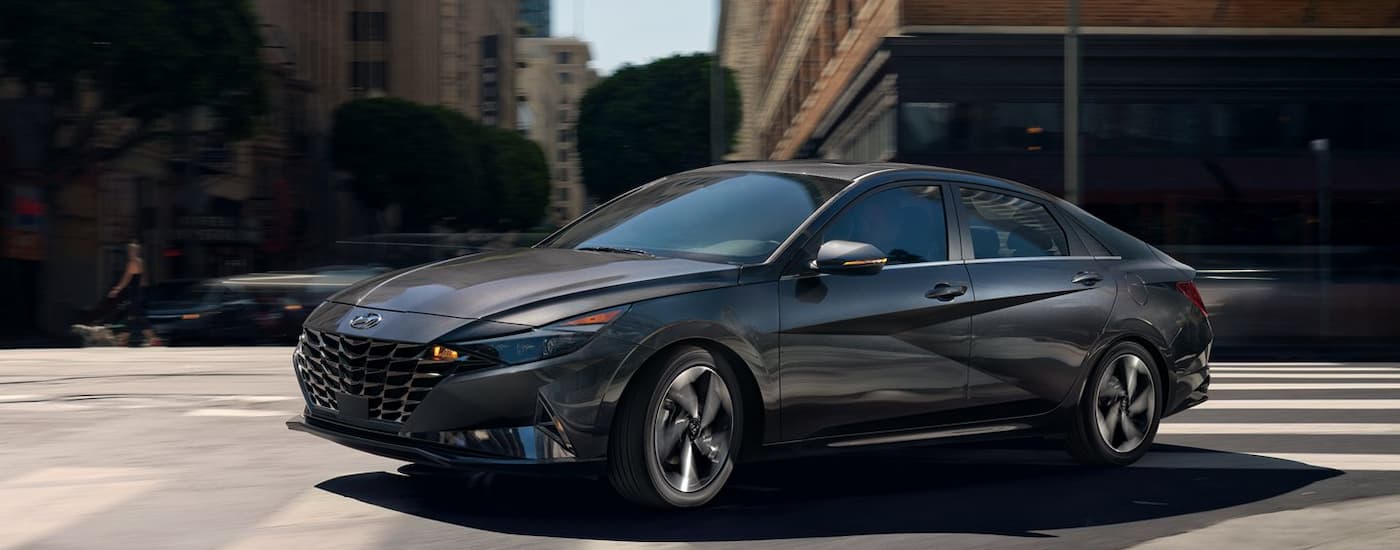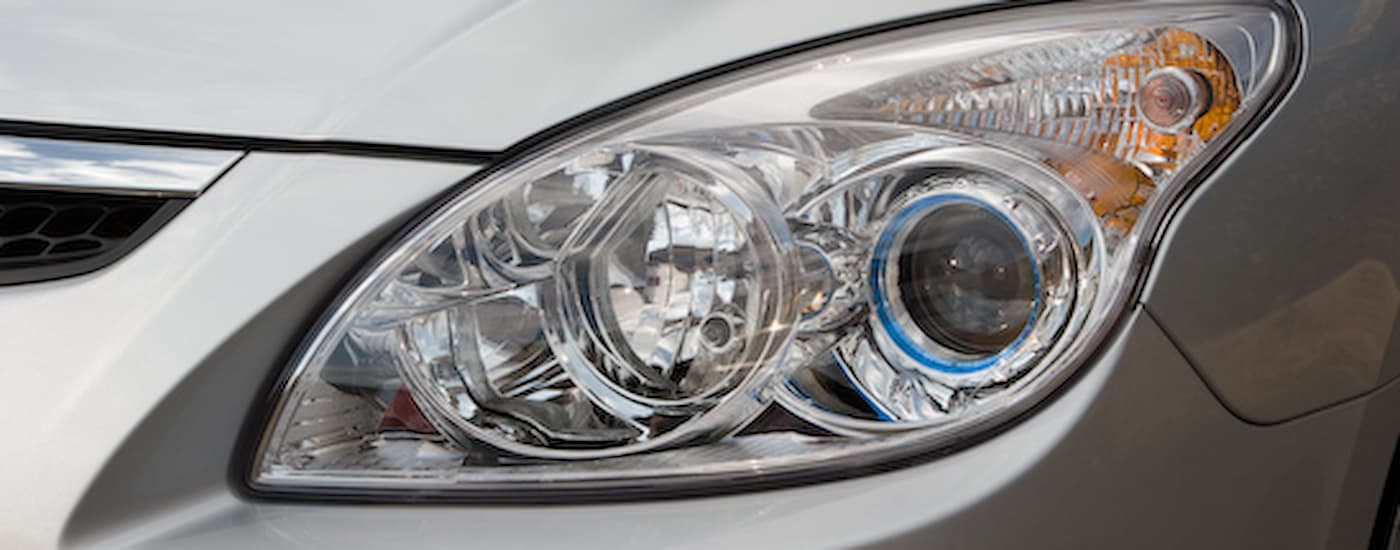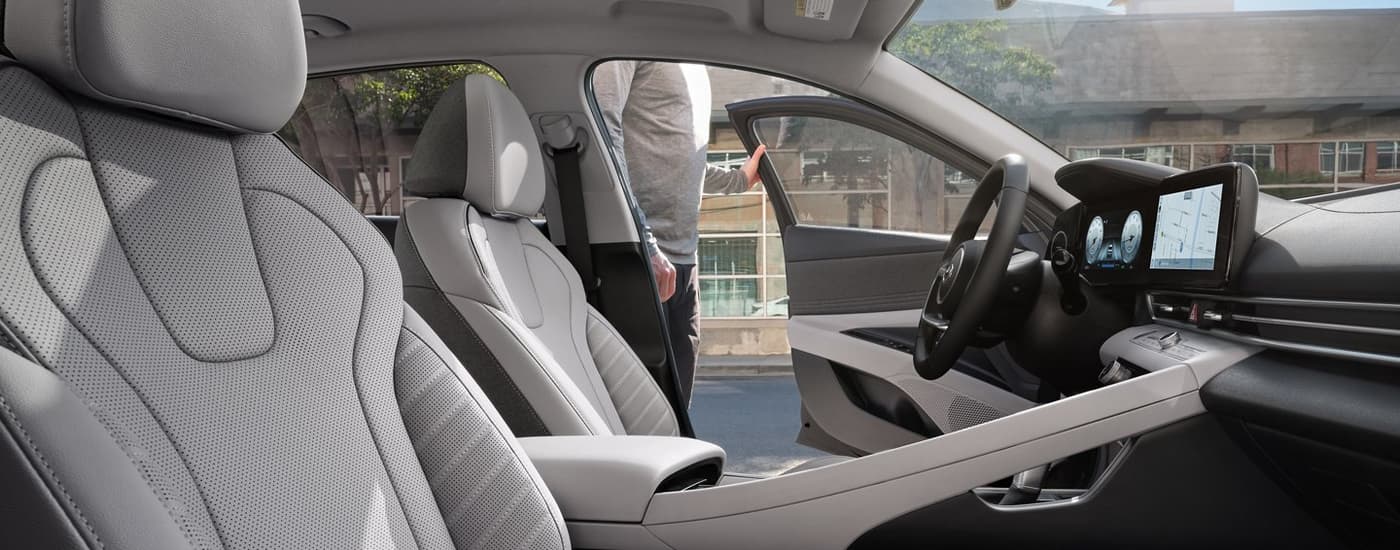A History of the Hyundai Elantra
Of all the brands that you'll find on the roads of Edmonton today, Hyundai has become one of the most popular. It's very easy to see why. Offering consumers one of the best warranties in the industry, cost-effective pricing, efficient fuel economy, and reliable performance, they're one of a kind and continue to improve as the years go by. One of the brand's most successful models, the Hyundai Elantra, has been an integral part of the company's fleet since its original launch in 1990. The history of this vehicle is one of innovation, excellence, and the willingness to succeed. If you've ever wondered why so many consumers are constantly asking, "is there a Hyundai dealer near me?" Here's a chance to find out as we take a look back at the Elantra and its journey into excellence.
1990-1999: A New Car in a New Decade
The 1990s were quite an interesting period in history. Looking back at them without the rose-tinted glasses of nostalgia, they were an odd animal attempting to reach a state of self-discovery. The automotive industry wasn't immune to this awkward period of transition, and taking a close look at some of the models and features that were popular certainly does a wonderful job at illustrating that.
Pop-up headlights, CD players, and the introduction of a new safety feature called the airbag were just some of the hallmarks of the early part of the decade. Even more visible were the styles of cars that gained immense popularity. The Honda Civic and Toyota Corolla had both been highly successful, and among the other imports arriving in the early part of the decade was the Hyundai Elantra, looking to make its mark. Equipped with two different inline four-cylinder engines, the Elantra instantly made an impression as a vehicle that was fuel-efficient and practical. While not flashy by any means, it focused its attention on the same area that had brought the Civic and Corolla their success––practicality.
The second generation of the Elantra was launched in 1996, bringing upgraded features and a more modern design. A consistency with the Elantra that would carry the vehicle through both generations was its drivetrain, which consisted of an inline four-cylinder engine paired with either a four-speed automatic or a five-speed manual transmission. The second generation of the Elantra is also noticeable for its rounded exterior design, which was becoming more popular in automobiles.
2000-2010: New Millenium, New Decade, Same Quality Car
While the 1990s has been considered by some to be a period of irony and transition, it was also a time of uncertainty as the new millennium approached. Conspiracy theories of the Y2K bug aside, the early 2000s were more or less a mirror reflection of the automotive trends of the previous decade. Four-door sedans were still the most popular model of vehicle to purchase. However, the pickup truck and SUV were now just as popular among consumers. As for Hyundai, 2000 would mark a time for a change with the Elantra, as it wouldn't just mark the beginning of a new generation of the automobile but recognition as a brand to know about.
The 2000 Hyundai Elantra that touched down in Canada was equipped with a sleek 2.0L four-cylinder engine that had 140 hp and continued to improve upon its already efficient fuel consumption. Rated at up to 9.7 L/100km, it was highly efficient for the time, and the following years only saw more improvements to Hyundai's standard-bearer of practicality. Of all the major changes that were announced for the Elantra during this period, there was one in particular in 2009 that would catch the eyes of everyone involved in the industry. The Elantra was going electric…
Unveiled at the Seoul Motor Show in 2009, the Elantra LPI HEV (Liquid Petroleum Injected Hybrid Electric Vehicle) marked a bold new era in the manufacturer's history. Hyundai had entered the world of the hybrid. While electrified vehicles have grown in popularity by leaps and bounds since 2009, the specs that accompanied Hyundai's announcement were quite impressive. A 5.6 L/100km rating impressed many people in the industry, especially those who had seen a steady stream of improvement from Hyundai since the Elantra debuted back in 1990.
2010-Present: The Times They Are a-Changin' (For the Better)
For Canada, 2011 was a pivotal year for South Korea's hottest export. As part of a full redesign of the Elantra, the Canadian version of the car featured a new 1.8L four-cylinder engine that produced an astonishing 8.3 L/100km while driving in the city. This number expanded to 6.3 L/100km when the Elantra had to undertake driving on the highway. This wasn't the only advantage related to the vehicle's powertrain, as Hyundai now offered a six-speed manual or a six-speed automatic transmission, bringing the vehicle's performance to a whole new level. However, Hyundai was just hitting its stride with the Elantra.
While released in Asian markets in 2015, the sixth generation of the Elantra would arrive in Canada in time for the start of the 2017 model year. A sloped rear angle accentuated the Elantra's already sleek shape, but that wasn't the only change that benefited the lives of the average consumer. New technological innovations had been interwoven into the vehicle's redesign, and the Elantra was now a contender for being the best compact sedan on the market. Standard that year was a 2.0L four-cylinder engine, one that offered effective performance with 147 hp. While more electrified vehicles were becoming available at this time, Hyundai proved it could still deliver a fuel-efficient product using a traditional gasoline engine, as the 2017 Elantra had a fuel economy of 7.4 L/100km.
The Elantra continued to improve as the years went on, and the seventh-generation model rolled out for the 2021 model year. Not only did this redesign bring incredible new styling that makes the Elantra stand out on crowded streets, but it also brought numerous performance and technology upgrades. The most impressive addition would see the Canadian market receive the Hyundai Elantra Hybrid. Far exceeding the expectations of Elantra drivers from the previous years, Hyundai's new hybrid is rated for an amazing 4.4 L/100km, making it one of the most fuel-efficient models that the manufacturer has ever produced. More interested in going fast than saving gas? Then you might want to take a look at the new Elantra N with its 276 hp turbocharged engine. It seems like there is a car for every Edmonton driver in the Elantra lineup, making Hyundai the go-to brand when searching for a "car dealer near me."
The Future Has Never Looked Brighter
Time waits for nothing, and as we've seen, the years have been quite kind to the Hyundai Elantra. Shedding its reputation as a budget car, the Elantra has risen to the occasion time and time again to prove its worth as one of the best options for consumers. Offering efficiency that goes hand in hand with practicality, the past three decades have witnessed a continuous stream of innovation that speaks to the drive of ambition possessed by the manufacturer. While the future is unwritten and unpredictable, we're watching and waiting for the next move that Hyundai makes with eager anticipation.







 Close
Close 

